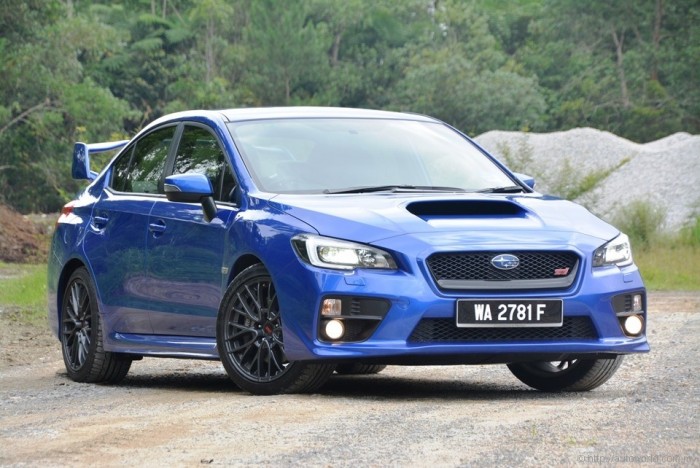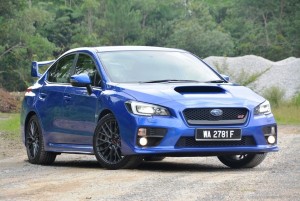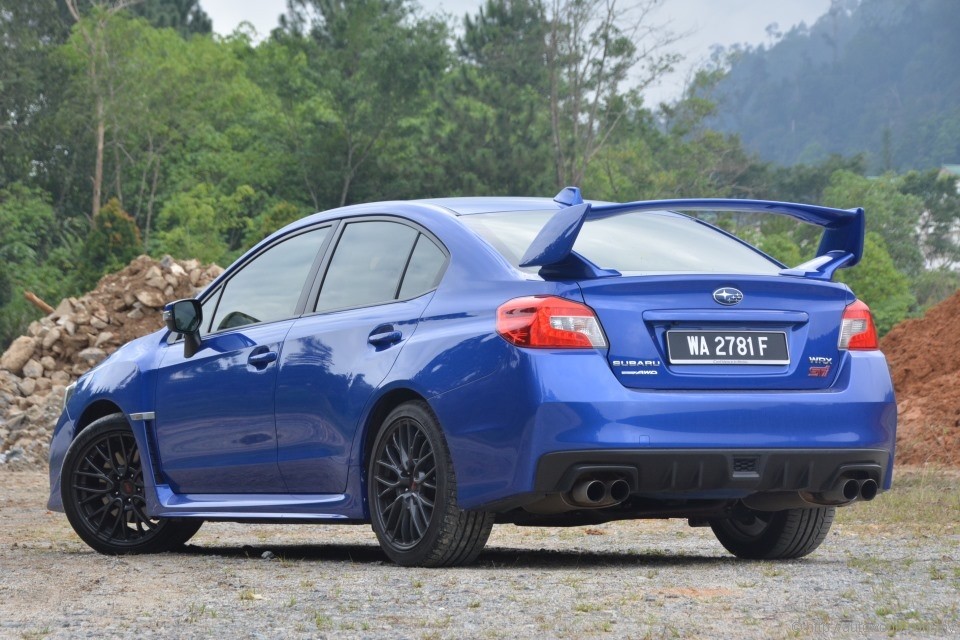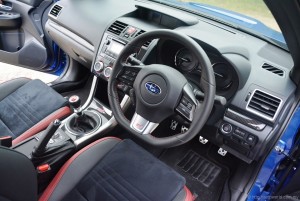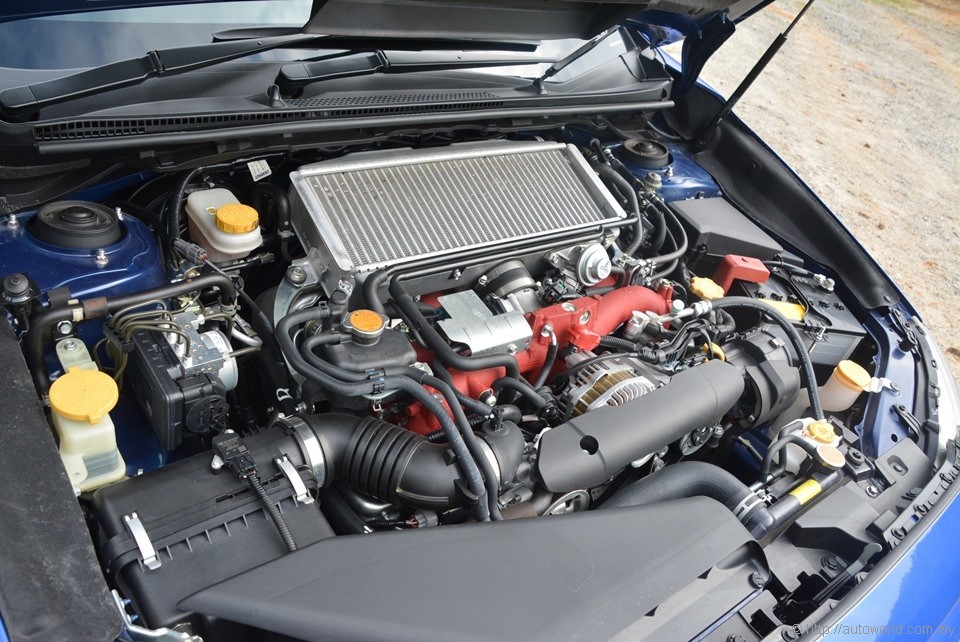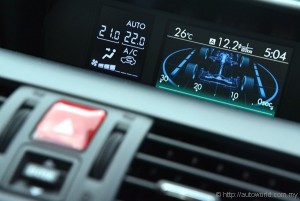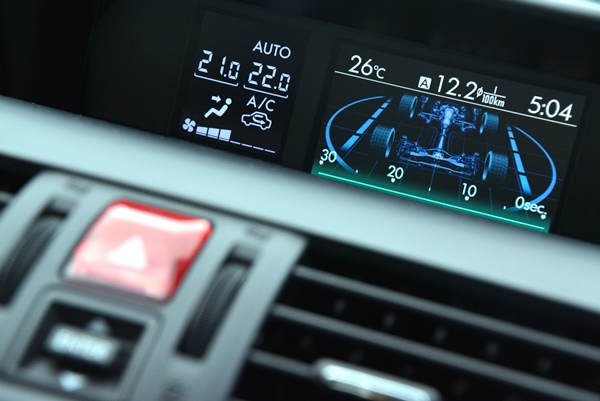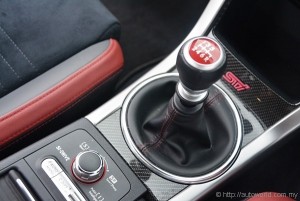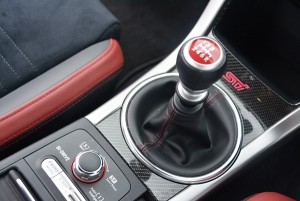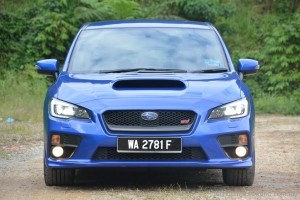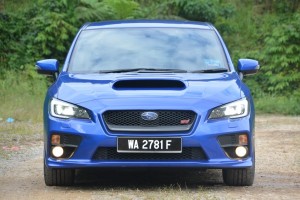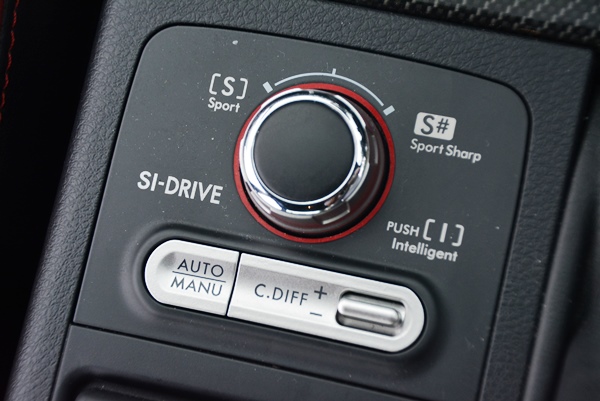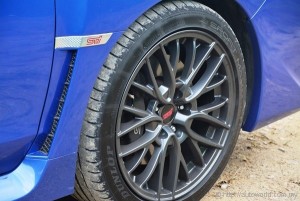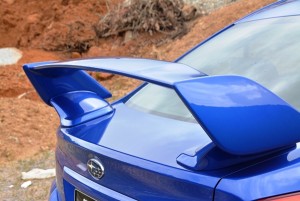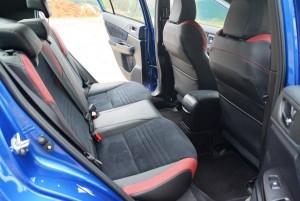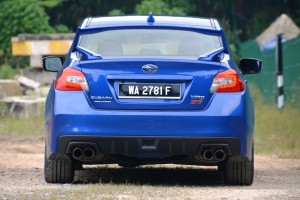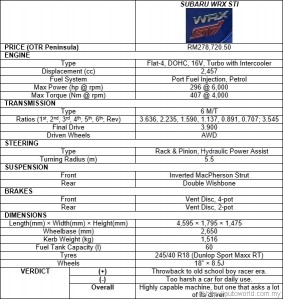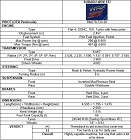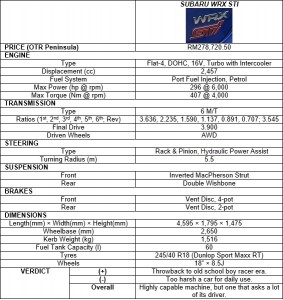Subaru WRX STI Test Drive Review
Whilst it is often said that real men wear pink, the lightest shade of red is rarely associated with brute masculinity, unless it is applied on the three sacred letters that form the initials of Subaru Tecnica International – STI.
Much like M is to BMW or AMG to Mercedes-Benz, STI is responsible for overseeing Subaru’s participation in motorsports and also developing performance-oriented flagships of its regular models. If your Subaru comes with an STI badge from the factory, it sits at the top of that model’s hierarchy.
STI has fettled with a number of past-generation Legacies over the years, but by and large, its handiwork is most commonly associated with the iconic Impreza WRX STI – a car whose rivalry with the Mitsubishi Lancer Evo defined the world’s rally scene for an entire generation. Those are days gone by, of course, and the Subaru WRX is now a separate model family from the mainstream Impreza.
 |
| Despite carrying basic underpinnings of the Impreza, the current WRX STI drops its donor car’s name. |
Prices & Variants
The STI as tested here is one of two variants of the WRX available in Malaysia. The regular WRX, with a new 2.0-litre turbo direct injection engine, hits the road at RM237,190.80 with insurance; the STI, meanwhile, comes at a premium of over RM40k over the WRX, needing you to part with RM278,720.50 before you can drive one away from the showroom.
Standard equipment of both models meet the required pre-requisites of their RM200k+ price tags, with self-leveling LED headlamps, keyless entry, USB & Bluetooth connectivity, seven airbags, ISOFIX, reverse camera, and electronic stability control. Items unique to STI are either cosmetic or performance related, both of which we will cover later; amenities-wise, the only difference between the two models is dual-zone climate control.
 |
| Multi-function display can be cycled through a range of screens. |
Specifications
The WRX may now be a separate model family from the Impreza, but make no mistake that the latter continues to supply the basic architecture that underpin these performance-oriented flagships. The familiar Subaru layout of having a low-slung Boxer engine driving all wheels remain present and correct.
Interestingly, it is the lower-powered WRX that actually has a more advanced engine, its 2.0-litre FA20 unit incorporating direct injection and twin-scroll turbocharging – its torque curve consequently mimicking that of modern European engines, with peak torque spread from 2,400 to 5,200rpm. Recently inducted into the annual Ward’s 10 Best Engines list of 2015, this 1,998cc engine shares a common block with the Toyota 86, but with vastly different internals. It is mated with Subaru’s in-house Lineartronic CVT as standard.
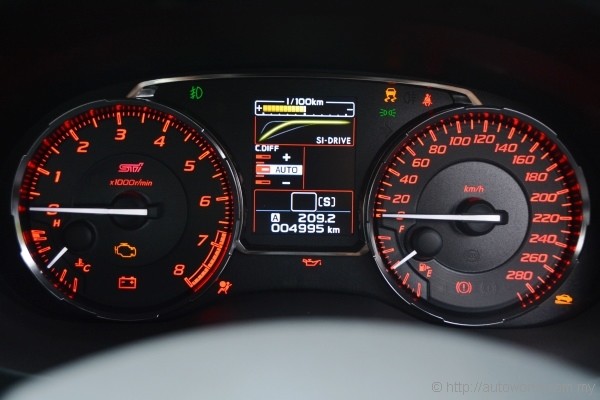 |
The STI here, meanwhile, has a slightly more old school powertrain, its carryover 2.5-litre EJ25 engine boosted by a large intercooled turbocharger. Fuel is fed via a port injection mechanism, and its delivery is consequently peakier, with 296hp produced at 6,000rpm its 407Nm of torque not fully served until 4,000rpm registers on the tacho. You also need familiarity with a clutch pedal to enjoy its performance – standard transmission is a 6-speed manual. Interestingly, Subaru actually has a higher-tuned version of the newer FA20 engine powering the Levorg in Japan with similar outputs. Quite why that engine is not implemented for the STI here in an era where downsizing has become a necessity to meet emission standards only Subaru would know.
Coping with the additional performance, the STI is fitted with a number of chassis enhancements not available in the regular WRX. Brakes, for example, are uprated from regular discs to high performance items from Brembo, clamped by four pistons up front and two at the rear. In the STI, drivers can also vary the front/rear torque distribution of the centre differential through the multi-mode DCCD system. Lastly, the STI sticks with old-fashioned hydraulic power steering, whilst the WRX switches over to electric assist.
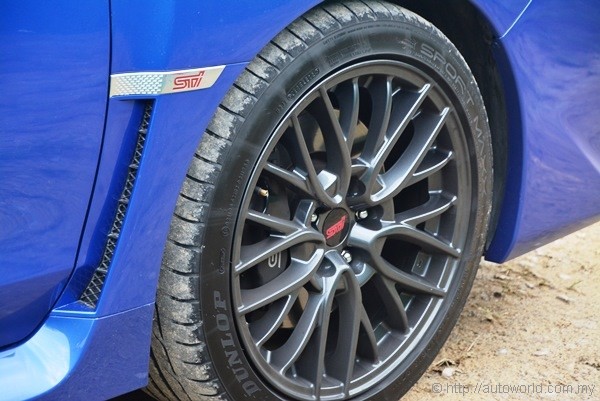 |
| High performance Brembo brakes provide stopping power. |
Exterior
Reflecting its removal from the regular Impreza range, the WRX and WRX STI appropriate sports a more radical visual departure from the mainstream model compared to its predecessors. Whilst basic proportions of the regular Impreza sedan (not sold in Malaysia) are maintained, differences between the WRX and the regular Impreza go beyond having more aggressive bumpers – the fascias are completely different.
For uninformed readers, a regular Impreza is pretty much a Subaru XV without its side body cladding. The WRX and STI instead shares its front end with the aforementioned Levorg, a standalone wagon model also derived from the Impreza’s platform.
In any case, there is no mistaking the identity of our test car, or its lineage, not with the striking pearl blue paint and large rear spoiler that defined the WRX STI’s DNA right from the first generation model. The regular WRX adopts a more understated approach, making do with a more subtle looking lip spoiler and its rims one size smaller at 17 inches.
 |
| Big bonnet scoop defines front fascia of the WRX and STI. |
Interior
Inside, the WRX STI unsurprisingly inherits the basic dashboard layout of the Impreza family, meaning owners of the XV will note some resemblance. Visually, it is without flair or fault, with all the relevant basics laid out in a relatively accessible and uncomplicated fashion. There is, of course, the customary sprinkling of red contrast stitchings and STI badges here and there to give the cabin a sporty flavor.
This 170cm test had no problems finding a good seating position and neither did he find any awkward positioning of controls. Some functions of the 4.3-inch central LCD screen are a little redundant though; whilst it is a logical place for the reverse camera, it is of little use if you switch it to view your boost gauge or AWD monitor – it’s not placed in a direction where you’d be looking often whilst powering your way through a trunk road. I found it most useful in trip computer mode.
Audio system features a six-speaker set up with the pre-requisite steering-mounted controls, USB connectivity, Bluetooth, and auxiliary input functionalities all present. It is an adequate setup, although the 2-DIN head unit that operates it looks distinctly old school next to contemporaries. Effective in operation, but not very upmarket in appearance.
 |
| Multi-mode toggle for the centre differential. |
Driving Experience
If the STI’s appearance suggests a throwback to an earlier era of performance motoring, be in no doubt that the driving experience is exactly as advertised. Once you get moving, it quickly becomes obvious that the STI is a car that asks for and gives no quarter, it demands maximum effort from the driver in all situations – whether you’re attacking the back roads of Ulu Yam or simply ambling along in your daily commute.
The gear lever rows through its six cogs with decent precision but its linkages feel heavy, requiring consistent and considerable force on the driver’s part for each shift; the clutch of our test car also suffers from a vague biting point – killing the engine on take-off proved embarrassingly easy – but such is the abuse that demo cars like the STI are subject to by testers, it is impossible to tell if this is the result of poor calibration or just accelerated wear and tear. For the record, our test car had around 5,000km on its clock.
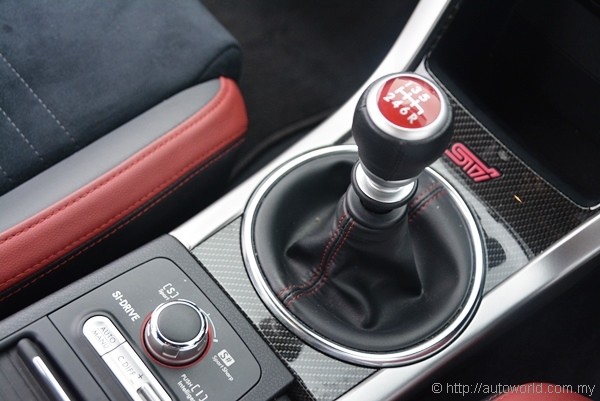 |
| 6-speed manual shifts precisely, but throws are heavy and require effort to execute. |
Power delivery from the engine is exactly what you’d expect from an old-school high-pressure turbocharged engine without the benefits of direct injection – unremarkable at the low to mid-range before and hitting hard at the top end of the rev range. Below 4,000rpm, there’s just about enough grunt to amble along gently, but if you want fireworks, you’ve gotta put both your legs and hands to work and keep the engine boiling near the tacho’s red zone.
If what we’ve described of the STI paints the picture of a demanding car to drive, well, we’re not done yet, because the suspension adds ‘harsh ride’ to the list of compromises which you would have to accept in order to live with the car. Besides having seemingly stiff springs there also seems to be a lack of travel for the suspension to effectively soak up even long undulations – if the JKR contractor did a poor job at surfacing the road which you’re traveling on, you’ll know about it.
There are rewards to your commitment, of course. The superior traction that is the result of Subaru’s finely-honed expertise in all-wheel drive system means that the STI is exceptionally competent around corners. Some degree of understeer is unavoidable because the engine sits fully ahead of the front axle, but that’s only if you carry really silly speeds into corners; ease off just a little as you enter, you can aim the nose accurately at the apex and power through corners with complete confidence, in all weather conditions.
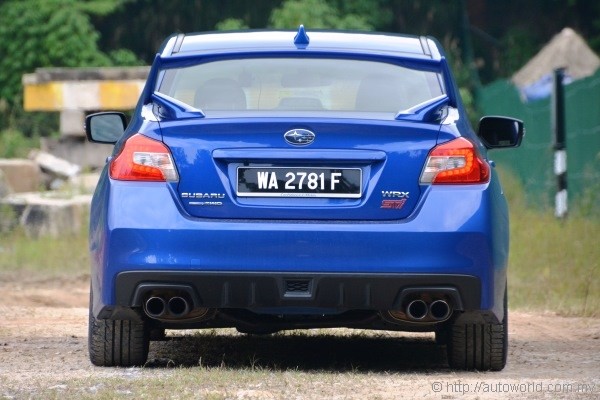 |
Verdict
The keenly-fought rivalry between the Impreza WRX and Lancer Evolution defined the motoring scene for a generation of enthusiasts; for these enthusiasts, the modern day WRX and its STI sibling is a throwback to those days gone by, which is why for all the compromises the WRX STI asks of us, it is difficult to not feel a genuine liking for it.
But if you’ve moved on from that era of motoring, it is just as difficult to not see this car as having stood still whilst the rest of the world caught up and moved on. Modern day performance cars have not only become faster, they have also advanced to encompass a wider job brief becoming easier to drive and live with in the process.
The STI is a highly capable and rapid performance machine, be in no doubt about that; just be mindful it is a demanding vehicle to drive, much of its performance potential requires effort to extract. If you have room for only one car at home, the STI is difficult to justify as your sole vehicle.
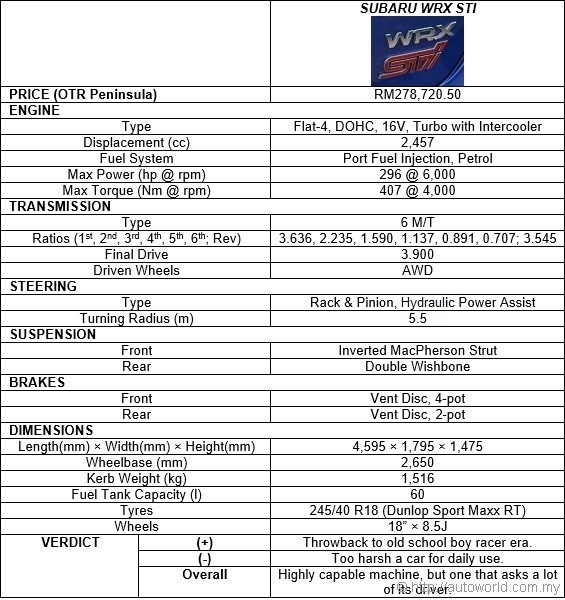 |




